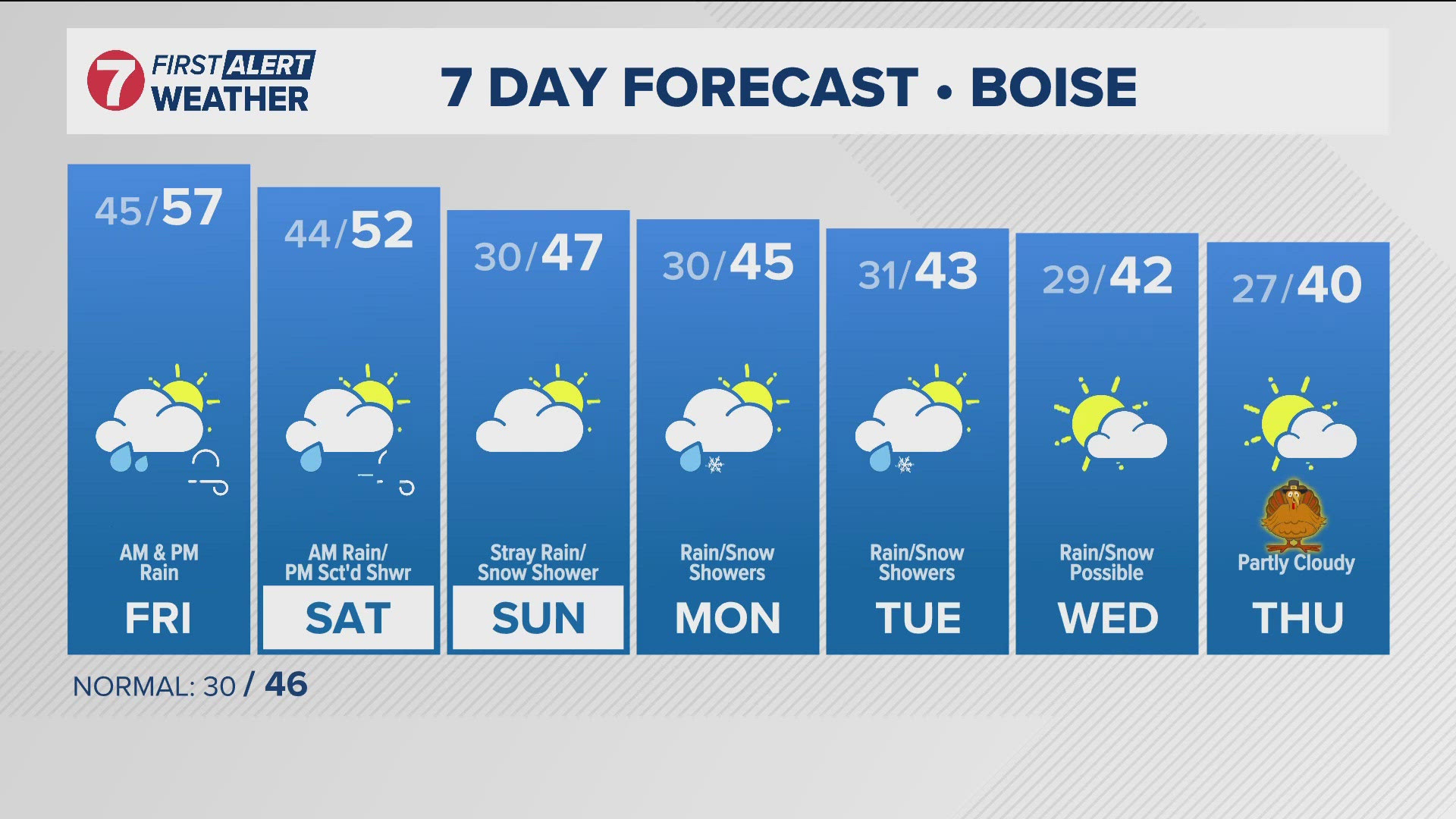BOISE, Idaho — Wednesday is the first official day of summer. With warmer temperatures on the way, people will be enjoying the water more. Reservoirs in and around the Boise area are nearing full capacity.
As of today, the Boise and Payette River systems are almost at 100% capacity. The Boise River system is at 98% and the Payette River system is at 97%.
During the snowmelt season, water managers are very busy. In our area, those managers include agencies like the Bureau of Reclamation and the Army Corps of Engineers. One of their primary goals is to ensure reservoirs get filled while mitigating any potential flooding.
The undertaking can be a fine line to walk. If too much water is released too early in the season, then the reservoirs might go unfilled if things dry out. But, if they wait too long to release water, it can create flooding on the Boise River.
So, it's quite an accomplishment that reservoirs are near full capacity, meanwhile, the Boise River never hit the official flood stage.
"This week, we're going to transition out of the flood risk management operations. We've been coordinating the flood operations since late March," said Joel Fenolio, Water Operations Management Team Supervisor for the Bureau of Reclamation.
"Right now, we'll probably have releases through town about 2,000 to 2,500 CFS (cubic feet per second) this week. Then by next week, we should be ramping down to about 1,200 CFS through the city and then eventually, get down to irrigation demands here probably early to mid-July," Fenolio continued.
Fenolio said the last time the reservoir system reached the level we're witnessing now, was in 2019.
Fenolio went on to detail what this season was like, "It was a unique season, and that we saw a lot of extremes. So, going into March, we had above average conditions, about 105% to 110% average snowpack. But, by the end of March, it was cold and well above average precipitation."
"March and April were cold months, so we didn't see too much runoff and then May hit. And just looking at the temperature departures, they were about three to six degrees higher than average. Throughout the month of May, we saw a very rapid runoff going into May. And by the time we hit June 1, we still had a pretty decent snowpack for this time of year," Fenolio said.
Fenolio said the organization and officials have just been managing the refill ever since the beginning of the month. "We've seen that flood risk diminish over the last couple of weeks. And we're working with the Corps on trying to make that happen because it's a joint effort between the two agencies."
Fenolio added that the highest flow rate on the Boise River at Glenwood was 6,000 CFS. The official flood stage is 7,000 CFS. However, the greenbelt starts to see impacts around 4,000 CFS.
Watch more Local News:
See the latest news from around the Treasure Valley and the Gem State in our YouTube playlist:



